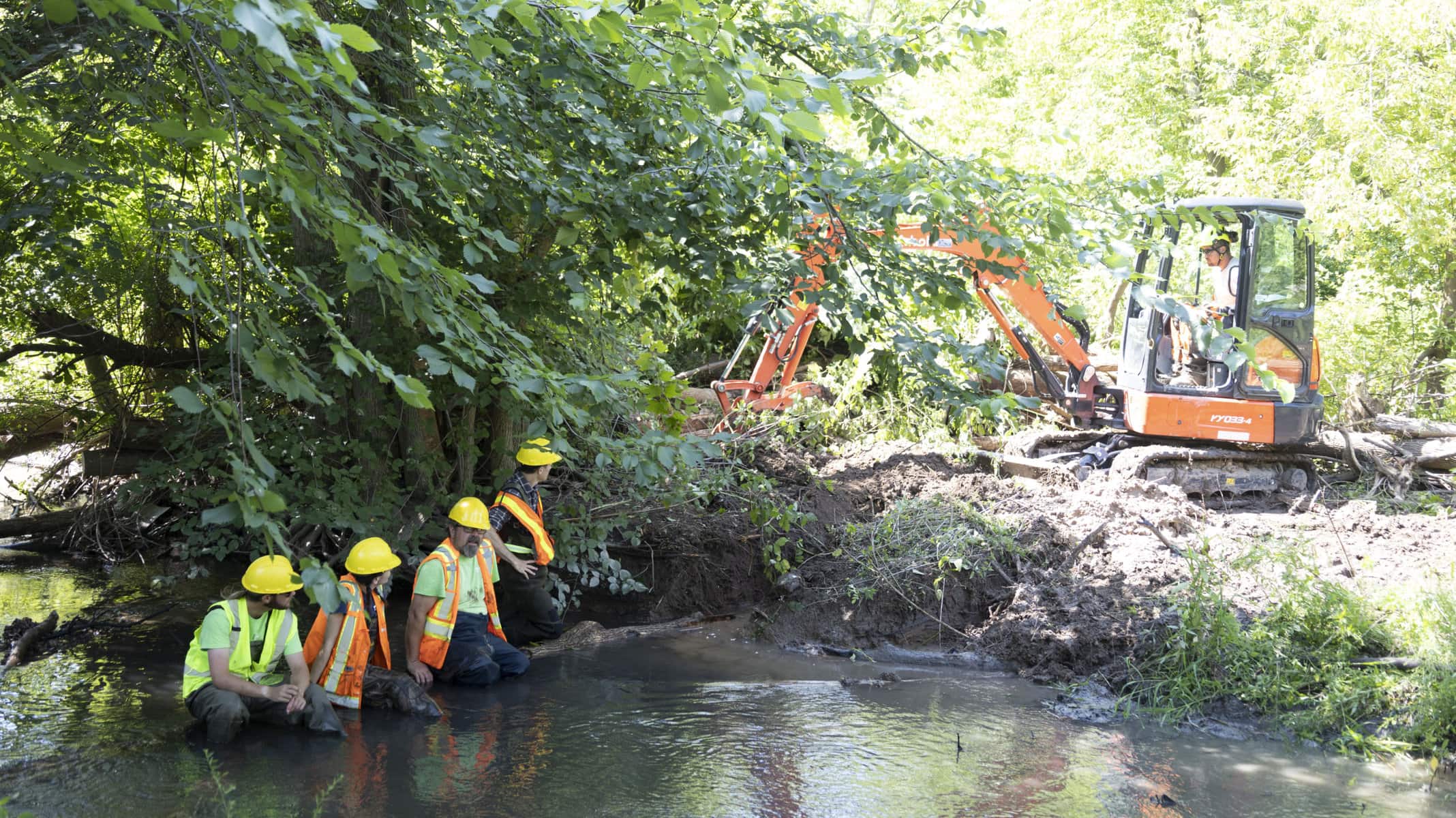Work to rehabilitate the forest and stream of Two Mile Creek began its third phase this week, with the hope of improving the creek’s natural environment.
Staff from the Niagara Peninsula Conservation Authority’s restoration team installed a structure called a cross vane that controls the flow of the stream of water.
This is the second one they’ve installed in Two Mile Creek – the first being about 100 metres away – at the end of Butler Street in Niagara-on-the-Lake. This represents
“It’s going to create a better habitat for the fish and help reduce the amount of sediment,” said Stuart McPherson, one of the restoration specialists.
During phase two last year when staff planted 4,800 native trees, he said they noticed some erosion along the banks of the creek, along with sediment buildup in some of the pools.
The creek has a ripple pool sequence, he explained, and a lot of the pools were filling up with lots of sediment.
Installing the cross vane with natural materials, like downed trees and stones, directs the creek’s energy into a specific spot and flushes out the build-up of sediment, he said.
“The cross vane is a little bit like putting our thumb on the hose,” McPherson said.
It works to reduce soil erosion on the creek banks and clean out sediment buildup within the creek, as well as create a healthier environment for wildlife such as fish.
“Those pools are refuge spots for fish (and) when they’re swimming upstream on hot days, they’re going in there, and they don’t like it full of sediment,” he said.
The project costs $3,500, plus staff time, and is being funded by the conservation authority, said Erika Navarro, the conservation authority’s communications specialist.
The creek winds its way through Niagara-on-the-Lake to Lake Ontario near the Lakeshore Road sewage treatment facility.
Come fall, the crew will come back and plant native plants, such as willows and dogwoods, that thrive along the water’s edge.
“They will come in here and their roots will help hold the banks so they get less erosion,” said McPherson.
The conservation authority is focused on improving water quality, wildlife and the overall health of its watershed, which is why it started the restoration grant program to make projects like the one at Two Mile Creek possible.
Navarro said intake will open up for its restoration grant program in a few months and people can learn more and apply at npca.ca/restoration.










